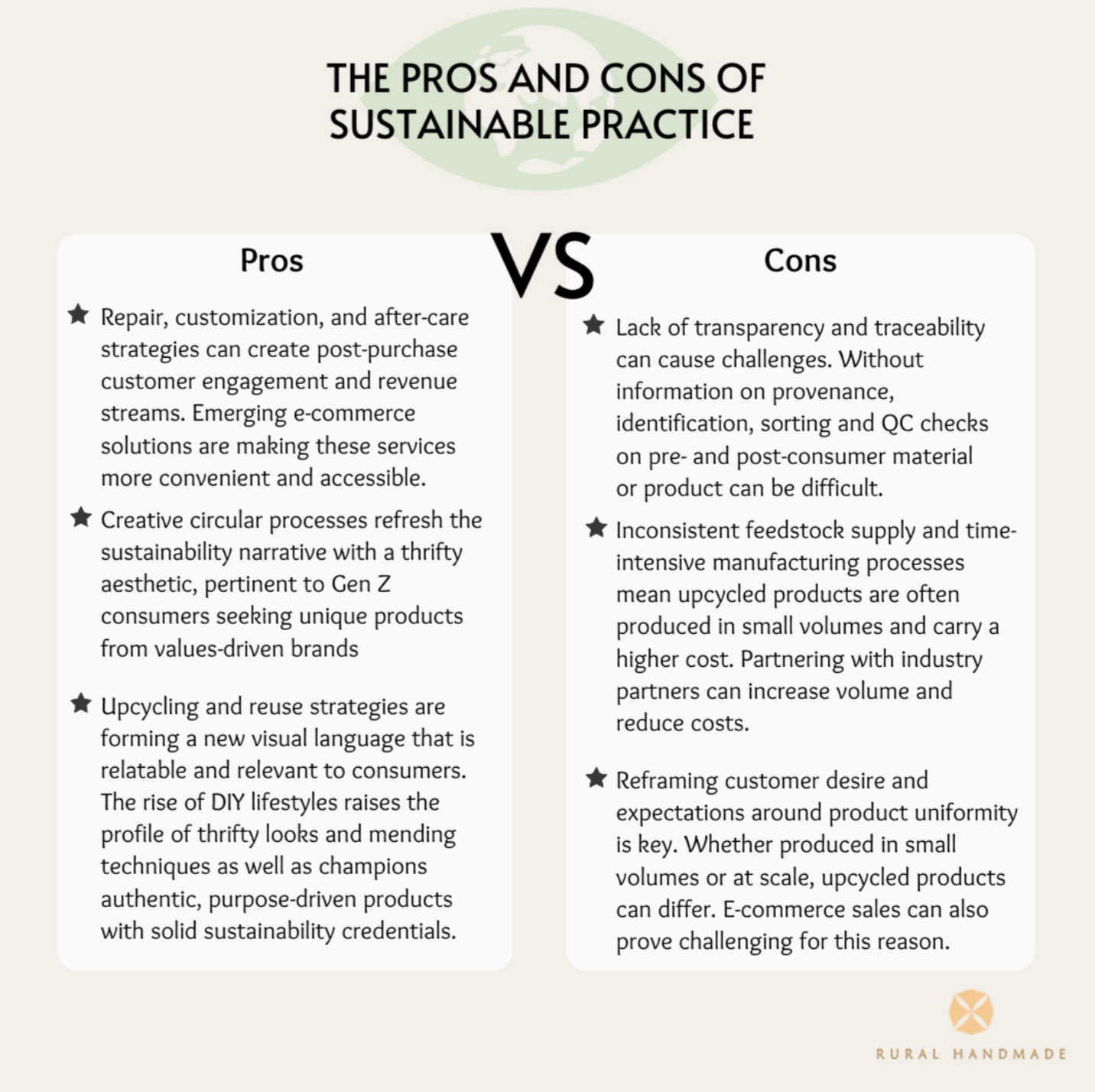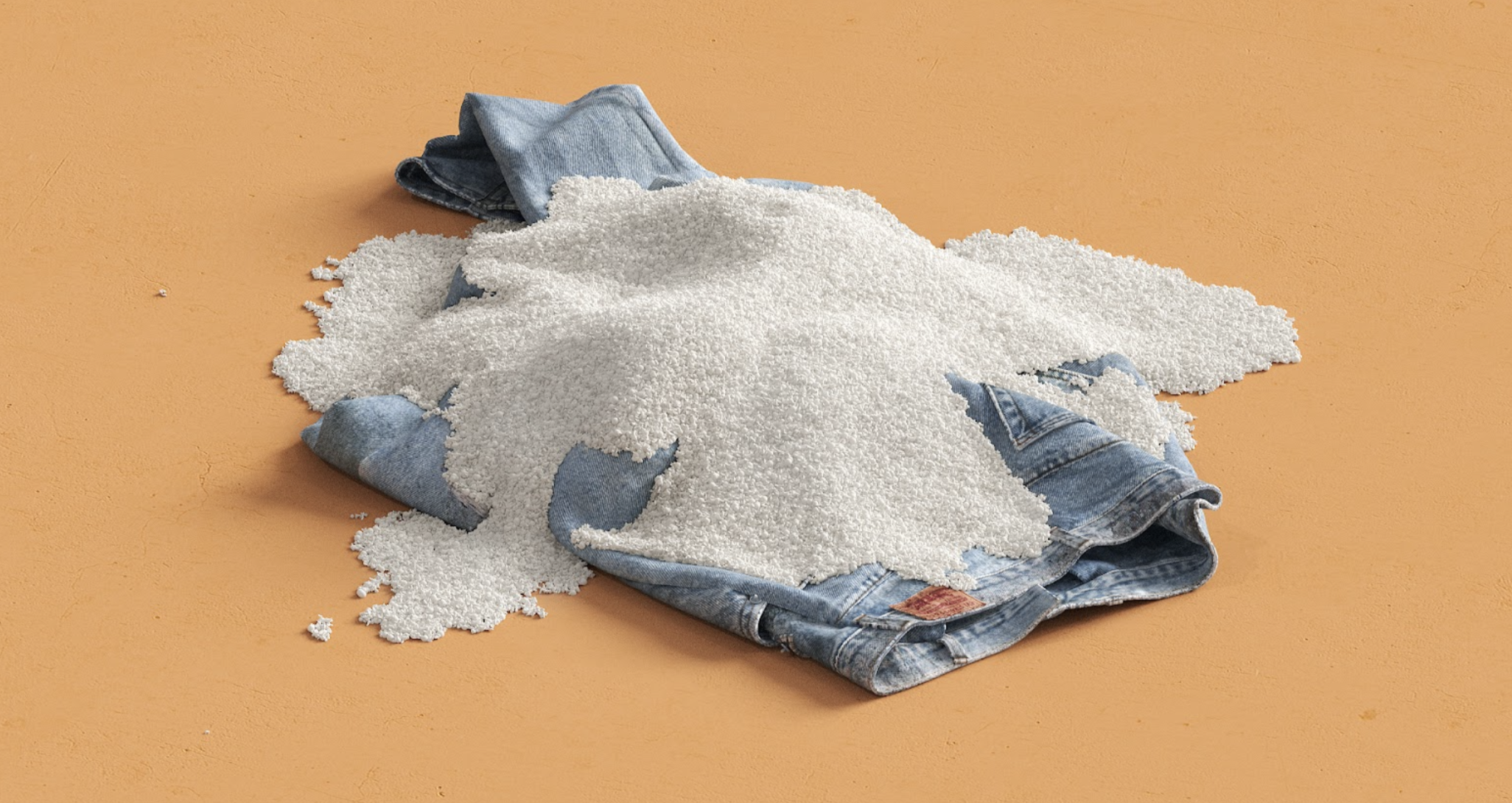Explore Sustainable Strategies In Fashion
Apr 08, 2022 | Namami Sharma
 The Blog discusses various stratetgies related to sustainable stratergies in the world of fashion.
The Blog discusses various stratetgies related to sustainable stratergies in the world of fashion. Upcycling & Deadstock Strategies
New brands and revenues emerge from lower-impact design systems such as deadstock design, upcycling, and repurposing products and fabrics. This report identifies challenges and opportunities. Consumer demand for upcycled, recycled, repurposed, and reworked items have been rising. The need to decarbonize and reduce waste and GHG emissions is now imperative.
How to induce climate-friendly fashion:
- Re-evaluate internal overstock - Create processes that enable everyday discourse between designers, buyers, and suppliers around excess and how to reuse the already made. Identify where your systems can be re-employed to repurpose existing products and fabrics.
- Audit in-house resources: Identify internal skills and resources available to renew overstock products before looking outside for fabric. Audit what you create in-house. Analyze repeat areas of overstocks in fabric and garments. Use data to track product and returns and catalog it visually by fabric, print, color, finish, and quality standards. This will enable you to assess volumes and relevance for repurposing better and maximize onward value in deadstock trading.
- Reduce excess at source: Overproduction undermines efforts towards circularity. Assess the suitability of pre-order and made-to-order in areas of your assortment. Brands and retailers employing these models now include Farfetch, House of Sunny, and the Australian brand Citizen Wolf.
- Maximizing deadstock value - Professionalizing deadstock will limit wastage and reduce reliance on virgin material resources. Supply chain traceability is the key challenge – creating transparency around industry standards, and certifications will increase resale value and wider usage.
- Textile-to-textile recycling - Pre-consumer waste and end-of-use apparel can be used as recycling feedstock. However, circularity relies on material composition compatible with existing technologies. Source yarns made from pre-and post-consumer textile waste. Commit to using more fibers and blends compatible with recycling technology.
Limited recycling innovation means the most recycled textile yarn is made from pre-consumer mechanically recycled cotton. Brands are starting to use their waste as feedstock. Patagonia and The Animal Observatory work with supply chain partners to incorporate pre-consumer cotton scraps and damaged products into the recycling process. Post-consumer recycled yarns are less common; waste is harder to collect, sort, and identify.
Small-batch upcycling - Post-consumer upcycling utilizes products donated or returned via trade-in or take-back schemes. They are disassembled and remade or updated via processes such as over-dyeing or appliqué. Gen Z drives the desire for post-consumer upcycling on TikTok, with DIY creator tutorials on thrift flips building up the demand. Identify items or trends and undertake research and development into upcycling processes, second-hand sourcing opportunities and reverse supply chain logistics to test and learn before scaling up.
Bigger brands are pioneering upcycling at scale, using an industry partner with purpose-built infrastructure and access to large feedstock volumes to reduce logistical challenges.
Steps to support Sustainability in the fashion industry:
Working with fibers and blends that contribute to long-term circularity: Brands and retailers should create mid-term fiber strategies that move away from non-recyclable product blends to support and build emerging circular feedstocks.
Identifying the best ways for your brand to deal with waste: Understanding where the greatest waste exists by cataloging overstocks for onward resale or recycling to extract optimum value. Foster closer relationships between internal design sourcing and suppliers to identify where waste can be re-utilized.
Leveraging the impact of circular strategies on aesthetics and design language: Reuse, repair, and upcycling strategies will continue to influence fashion’s visual narratives. Reconstructed garments and thrifted looks are feeding into mainstream tastes. Speak to youth consumer values and aesthetics by integrating these lower-impact processes into your product lines.
In Conclusion…
To summarise, Work with fibers and blends that contribute to long-term circularity.
Understand where the greatest waste exists by cataloging overstocks for onward resale or recycling to extract optimum value. Foster closer relationships between internal design sourcing and suppliers to identify where waste can be re-utilized. Leverage the impact of circular strategies on aesthetics and design language. Focus communication strategies on authentic storytelling and celebrating the history of reused products. Communicate the differences and celebrate and premiums, where relevant. Avoid greenwashing by being clear and transparent with provenance and sourcing information.
The Pros and Cons of Sustainable practice in fashion:

| Pros | Cons |
| Repair, customization, and after-care strategies can create post-purchase customer engagement and revenue streams. Emerging e-commerce solutions are making these services more convenient and accessible. | Lack of transparency and traceability can cause challenges. Without information on provenance, identification, sorting, and QC checks on pre-and post-consumer material or products can be difficult. |
| Creative circular processes refresh the sustainability narrative with a thrifty aesthetic, pertinent to Gen Z consumers seeking unique products from values-driven brands. | Inconsistent feedstock supply and time-intensive manufacturing processes mean upcycled products are often produced in small volumes and carry a higher cost. Partnering with industry partners can increase volume and reduce costs. |
| Upcycling and reuse strategies are forming a new visual language that is relatable and relevant to consumers. The rise of DIY lifestyles raises the profile of thrifty looks and mending techniques and champions authentic, purpose-driven products with solid sustainability credentials. | Reframing customer desire and expectations around product uniformity is key. Whether produced in small volumes or at scale, upcycled products can differ. E-commerce sales can also prove challenging for this reason. |
Table 1: Sustainable practices pros and cons


Recommended








